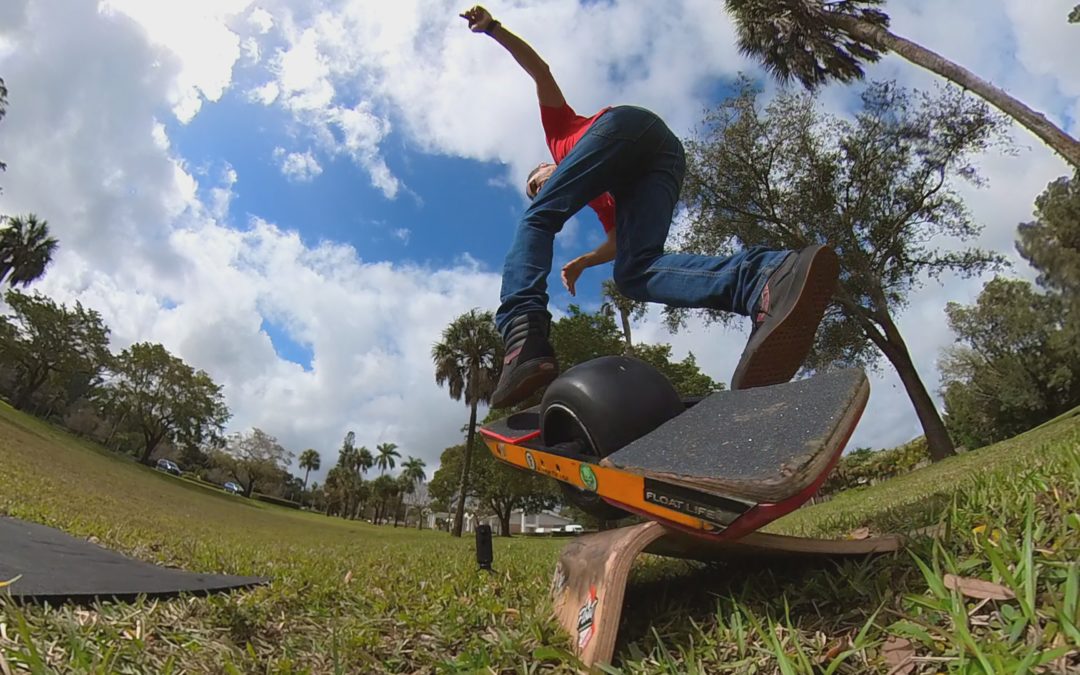Introducing the Richflip: A 360 Kick Flip for Onewheels
We’ve all heard someone shout, “Do a kickflip!” as we rolled past on our onewheel. Well, Chris Richardson can actually do one. And an ollie—a real ollie, not just a bonk, though he doesn’t recommend it. Since the very first days of onewheel, Richardson has been breaking down the mechanics of known tricks as well as laying down his own never-been-done (NBD) moves.
In 2019 he invented the Darkslide, a curb slide where the rider flips the onewheel over and slides with the sensor side down. Now he’s done it again with the Richflip, an insane variation on the skateboarding tre flip, also referred to as a 360 kickflip.
In the Richflip, the onewheel completes 2 rotations midair. The first rotation brings the tail around 360 degrees clockwise. The second brings the toeside over the heelside 180 degrees before weirdly switching direction and returning the board to its original orientation.
We talked to Richardson about the inspiration and process behind the invention of the Richflip, including a brief primer on the physics that cause this bizarre rotational reversal.
HOW IT STARTED
The invention of the Richflip has been a years-long process. The idea struck while Richardson was working on a different trick and noticed the board kept almost flipping over.
“I still have a kid’s mind,” Richardson said. “That makes everything just a little bit more whimsical. Sometimes something happens by accident and I get really curious about whether I can do it intentionally.”
“I set my challenges big,” Richardson admitted. “There’s plenty of tricks that I’ve tried over the years that I never did get. But sometimes I’ll find one and I really do think it’s possible and I go through phases where I try to figure it out.”
Possible, however, didn’t mean “easy.” Richardson drew marks on his tire and analyzed slow motion footage of his progress, or lack thereof. He bruised his shins, bought soccer guards, and tried again. He sprained his ankle, rested for a week, and tried again. It took hundreds of tries over the years, and sometimes Richardson had to walk away for weeks or months at a time—but he always came back.
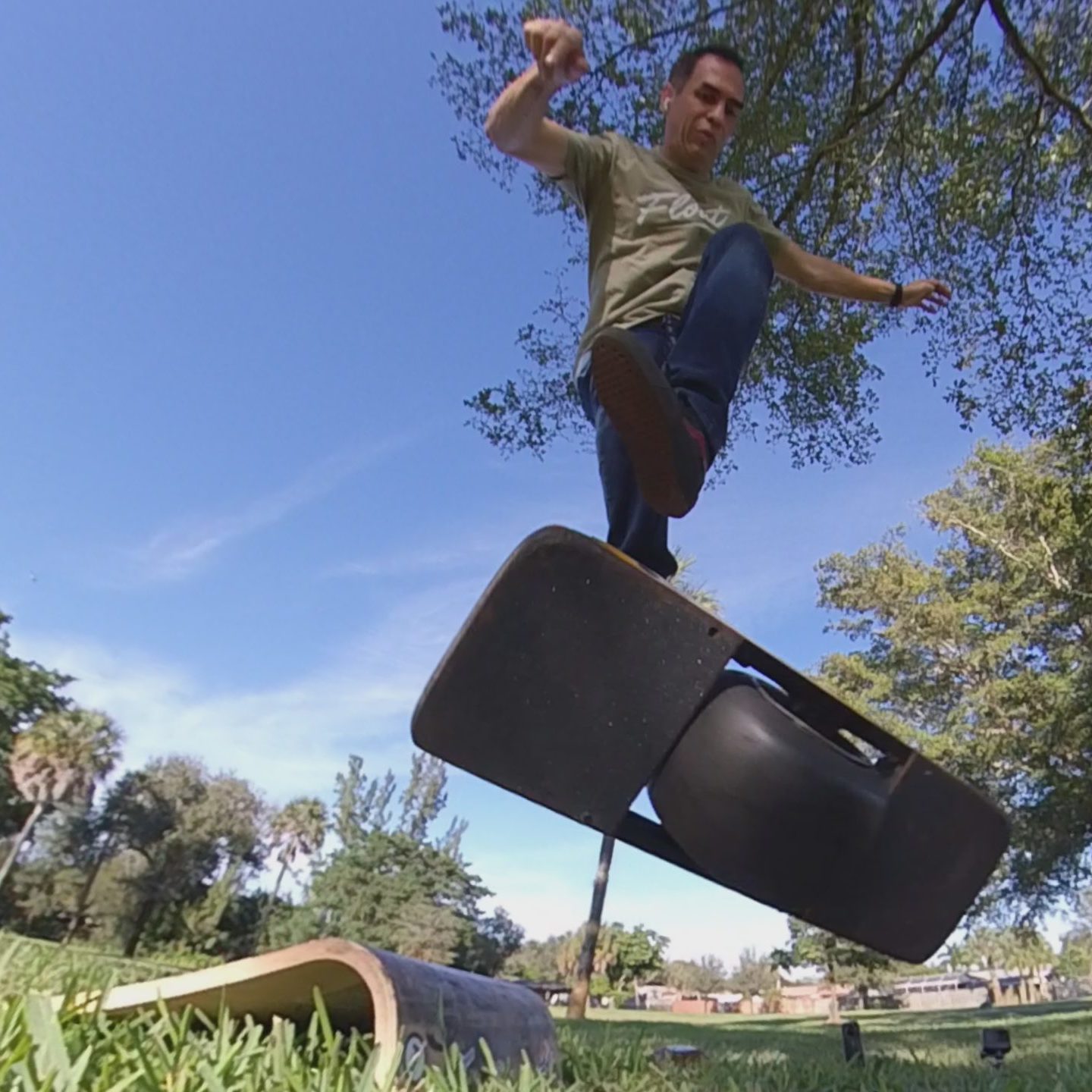
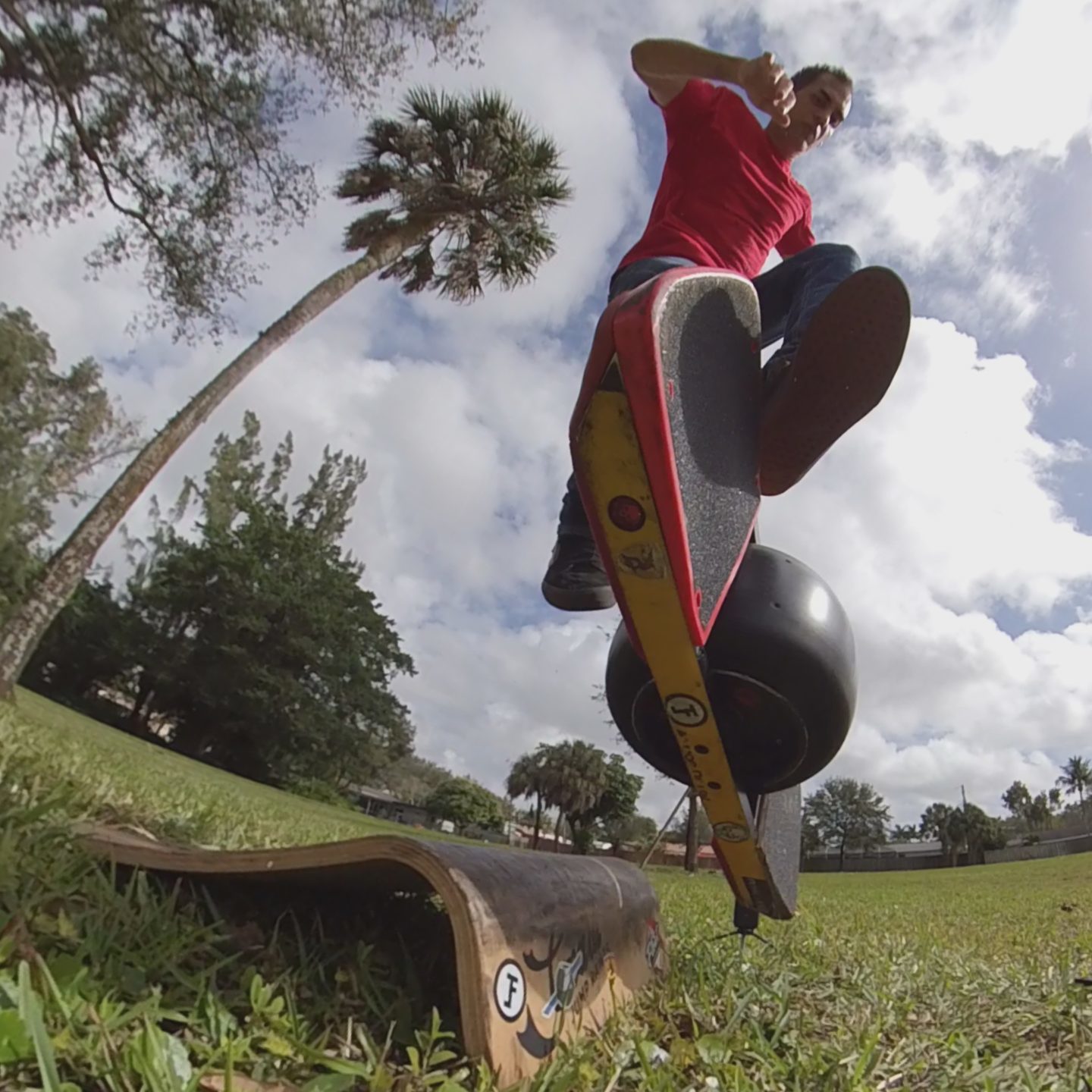
LOCKING IN THE RICHFLIP
Richardson studied topics like neurolinguistic programming (NLP), hypnosis, and how to rewire the brain—in other words, learning how to learn—for the past 15 years. He provides coaching services based on these principles, and applies them in his own life when learning onewheel or skateboarding tricks. He believes that unlocking the mental side of riding can open up a whole new world of possibilities—and based on his track record of onewheel NBDs, we’re gonna say he’s probably right.
Several months ago, Richardson had an “aha” moment where he came close enough to landing the trick to see what the board was really doing—and it was totally counterintuitive.
After that, he started dedicating himself in earnest. He drilled the trick daily, took videos, analyzed footage and took notes. Every small aspect had to be honed and committed to muscle memory: Foot positioning, timing, how much pressure to apply and at what angle. Every day he got a little bit closer to landing on his feet, engaging the sensor, and rolling away from the first-ever onewheel tre flip.
HOW IT WORKS: THE TENNIS RACKET THEOREM
There are some crazy physics behind the Richflip. The Dzhanibekov Effect, or Tennis Racket Theorem, describes the strange instabilities of certain spinning objects. It essentially boils down to how asymmetrical mass affects the centripetal and centrifugal forces of rotating objects.
This is most easily demonstrated by flipping a tennis racket head-over-handle. The racket completes a second half-rotation midair, so that the face of the racket that started out on top will now be facing down.
The Dzhanibekov Effect comes into play in skateboarding with the Monster Flip, a nearly impossible trick in which the skater wraps one foot around the board’s tail to prevent it from making the natural secondary rotation that physics demands. Believe it or not, someone did a whole scientific paper about this. Read it here if you like math.
If you watch the Richflip frame by frame, you’ll see the same effect in action, bringing the toeside rail over and back while the tail completes its rotation.
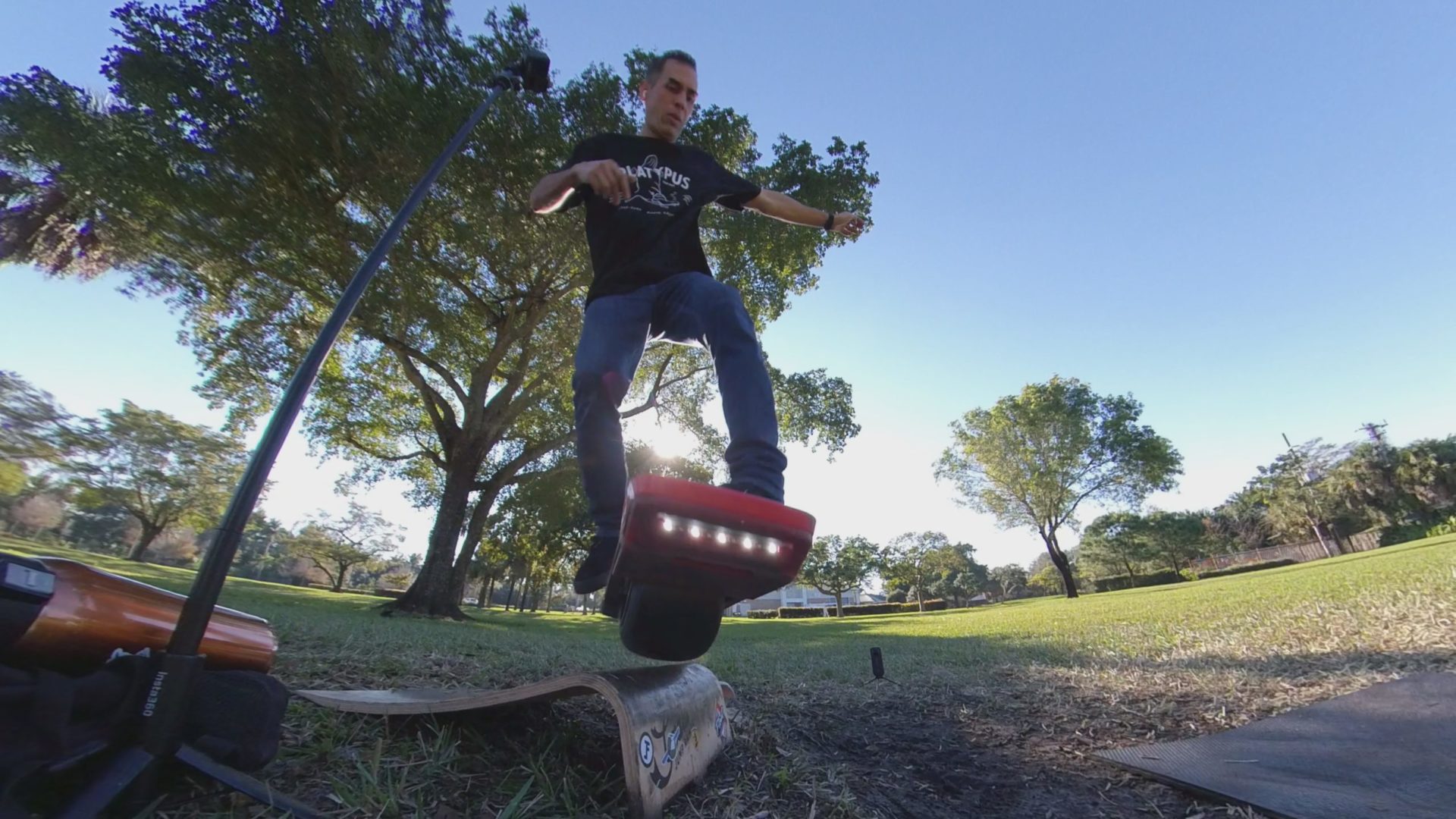
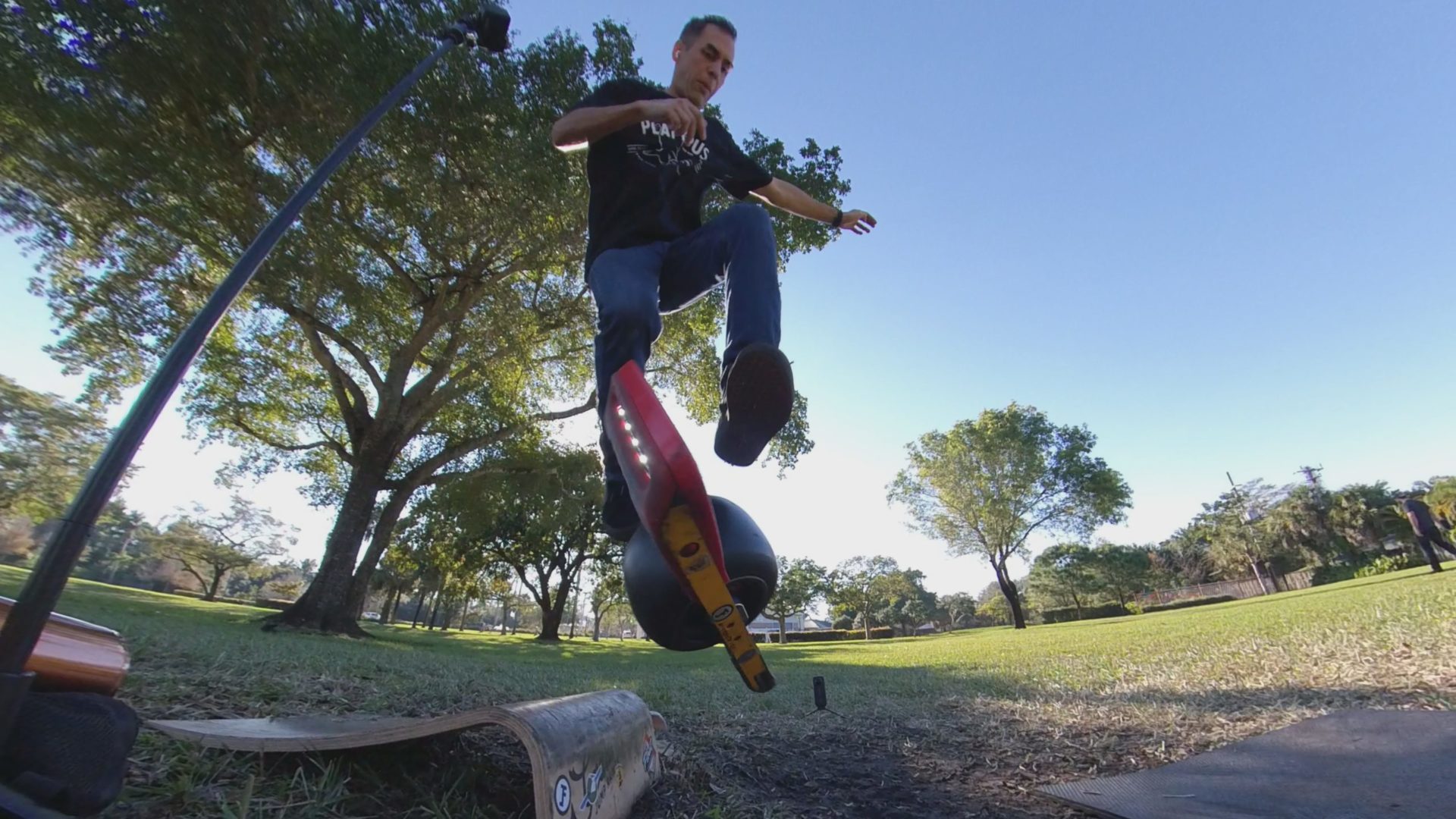
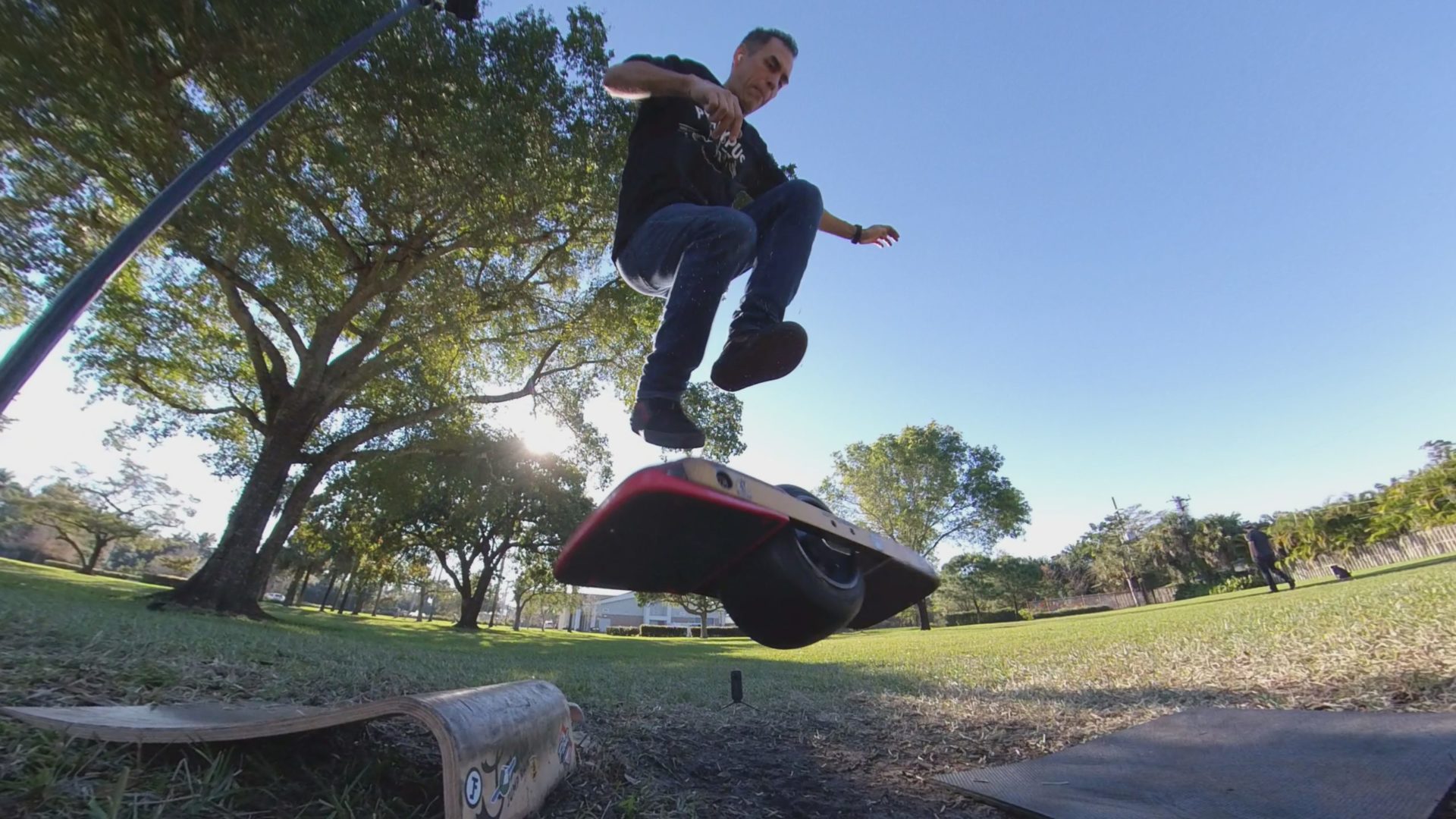
So You Want to Do a Richflip
Cool trick, bro—how’d you do it? For those who’d like to attempt the Richflip, Richardson offers these pointers:
- Wear shin guards. This is not optional.
- Try practicing on a drop or a small ramp like a Graw jump ramp. Place the ramp on a decline to give yourself extra time to complete the flip.
- As you’re launching into the air, start to initiate the flip with your toes. Use more pressure than you think you need–like, a LOT more. “You have to spin the living shit out of this thing,” said Richardson. It will take some time to build up the leg strength to do this.
- Let the motor help you. With the right foot angle, the motor can help drive the spin instead of just scissoring your legs.
- Don’t expect the board to catch you at first. “The front sensor hates this trick,” Richardson said. “Even if you get the spin right and land on your feet, the sensor won’t always engage right away—there’s a delay after the board has been rolled or flipped. The first time I landed it was sloppy… but it felt incredible.”
Finally, and perhaps most importantly, don’t neglect the mental aspect! Reach out to Richardson on YouTube or Instagram at the handle @onewheeel (with 3 “e”s) to inquire about his coaching services.

